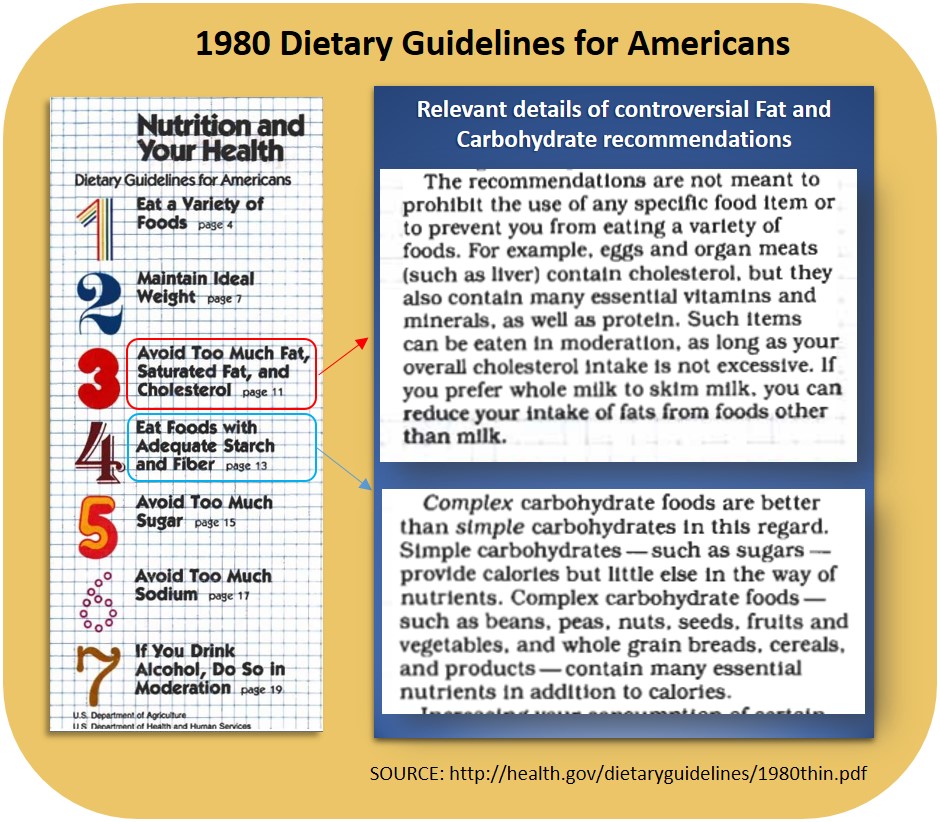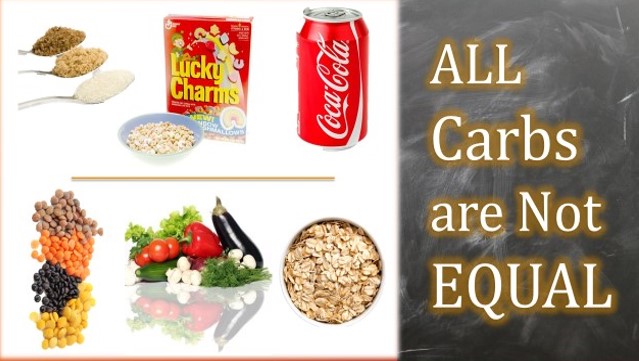I am following the Dietary Guidelines for Americans for 1 month. You can read my earlier posts about this experience here.
Much of the criticism of the Dietary Guidelines for Americans centers around the recommendation of carbohydrate-containing foods. Popular dogma is that carbohydrates make people fat, increase the risk for many diseases, and cause a variety of ailments. Some of the most vocal proponents of these ideas include journalists Gary Taubes (Good Calories Bad Calories; Why We Get Fat) and Nina Teicholz (Big Fat Surprise).
“Scientists have to reckon with the fact that the obesity epidemic basically began with the first dietary guidelines. You can’t look at that and not think we’ve done something terribly wrong” – Nina Teicholz
O.K., the first set of guidelines weren’t perfect, but have a look a the 7 guidelines below – how could these cause the obesity epidemic?

These guidelines show there has been longstanding and prominent advice to limit sugar and refined carbohydrates (though Americans have not followed this advice).
The current Guidelines emphasize carbohydrate quality and variety, with recommendations to obtain carbohydrates from sources like vegetables, fruits, legumes, and whole grains and to limit sugars and refined grains. Nonetheless, Teicholz remains a vocal critic of the current Dietary Guidelines.
CARBOHYDRATES Can Be Confusing, but that Doesn’t Make Them Bad
The type of carbohydrate you eat is likely more important than the amount. Carbohydrate critics tend to lump all carbohydrates into one category (somewhat like equating candy to broccoli). Vegetables, fruits, whole grains, and legumes are carbohydrate-rich foods, and affect the body differently than the refined and processed carbohydrates found in many popular foods.
Certain people may be more susceptible to the influences of carbohydrates on insulin (but again, eating lentils will influence the body differently than cake . . .). And how we metabolize carbohydrates has a lot to do with how active we are: though some studies do account for physical activity, even those participants categorized as “active” do not move much.
All Carbs Are Not Equal . . .
The foods in the graphic below are all high in carbohydrates, but they have different effects on our bodies. Overwhelming evidence shows that a health promoting dietary pattern should limit sugars and refined carbohydrates and that many people can benefit from including quality carbohydrates like vegetables, legumes, and whole grains.
